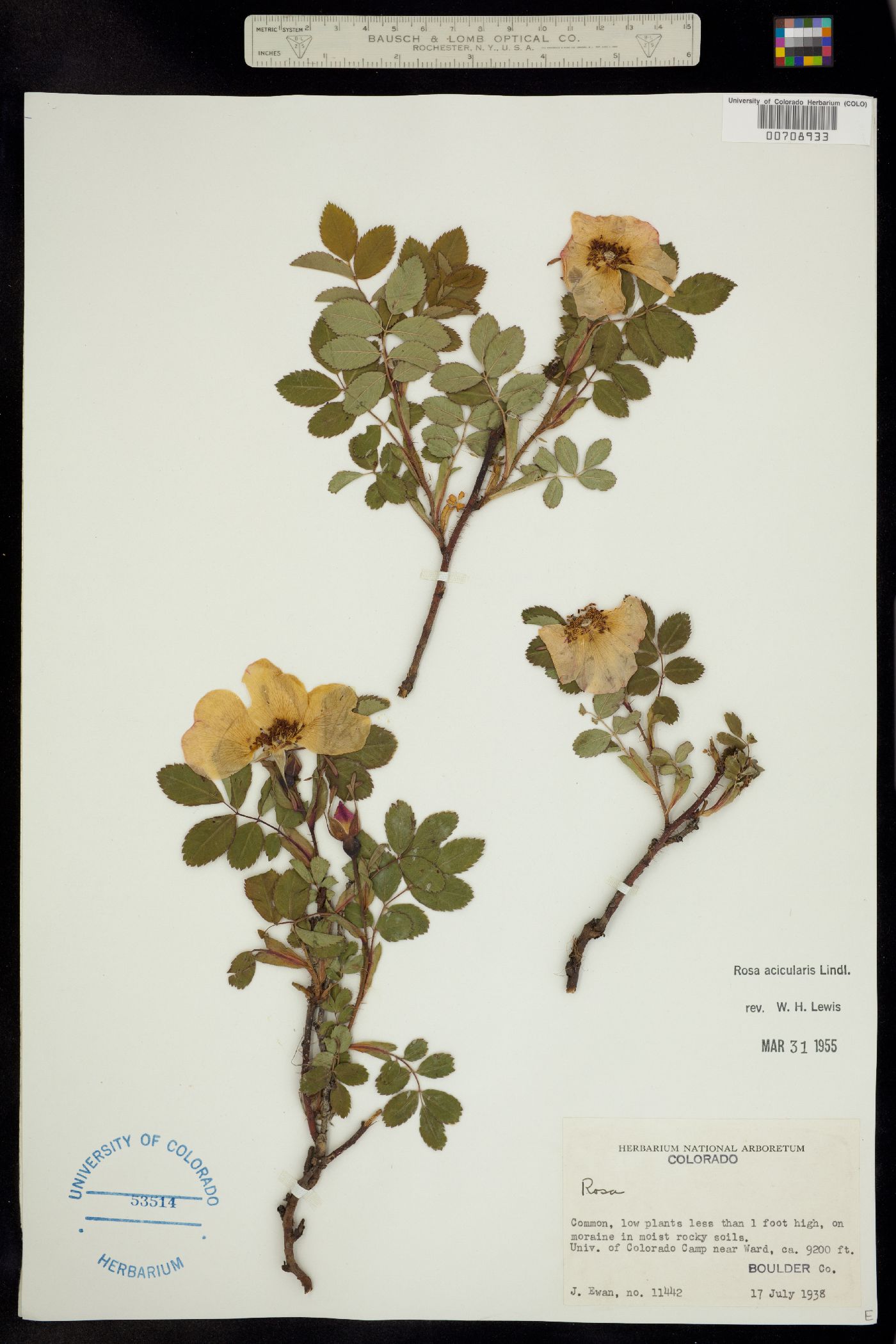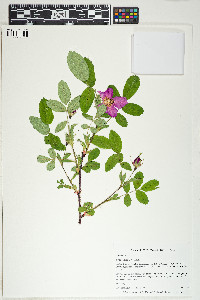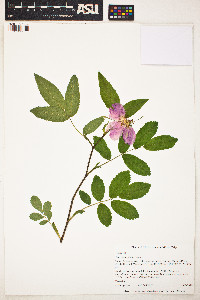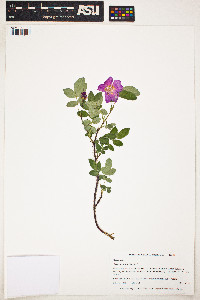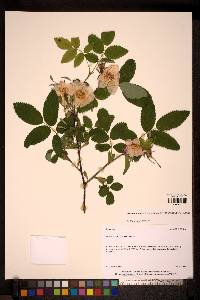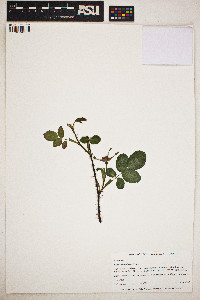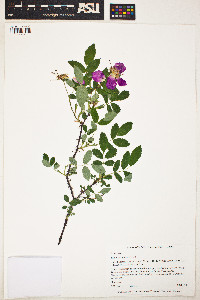|
|
|
|
Family: Rosaceae
prickly rose
|
Colony-forming shrub to 2 m tall Stem: densely covered with slender, straight unequal prickles and bristles, even on some flowering branches. Leaves: pinnately compound, stalked, main axis (rachis) usually hairy and glandular, with five to seven leaflets (sometimes three). Leaflets are 1.5 - 5 cm long, elliptic to egg-shaped with a blunt to pointed tip and rounded to nearly heart-shaped base, toothed, usually glandular, dull and hairless above, and downy to minutely hairy beneath. Flowers: usually borne solitary on lateral branches of previous year's stems, sometimes in small clusters, 4 - 6 cm across, with a hairless (rarely stalked-glandular) stalk, hairless floral tube (hypanthium), persistent sepals becoming erect and coming together in fruit, and fragrant pink to deep rose petals 1.5 - 3 cm long. Fruit: bony achenes surrounded by the mature floral tube (hip). The smooth hip is dark blue to purplish, 1 - 2 cm across, and elliptic to slender pear-shaped with the neck below a beak of sepals. Achenes pale brown and 4 - 5.5 mm long. Stipules: subtending leaves, enlarged, glandular-hairy along margins, densely covered with short-stalked glands when young. Similar species: Rosa acicularis, Rosa arkansana var. suffulta, Rosa blanda, and Rosa cinnamomea have hairless flower stalks and floral tubes and erect, persistent sepals. Rosa arkansana var. suffulta differs by usually having nine leaflets and stems. Rosa blanda can be distinguished by its smooth upper internodes and current year's lateral branches and its stipules that lack glands. Rosa cinnamomea has coarse, stout, recurved prickles subtending the stipules. Flowering: May to early June Habitat and ecology: Rare in the Chicago Region. Occurence in the Chicago region: native Etymology: Rosa is the Latin name for a rose. Acicularis means needle-like, referring to the prickles. Author: The Morton Arboretum Colonial; stems to 1(-2) m, usually densely beset with straight, slender, unequal prickles, even on the flowering lateral branches; stipules pubescent, glandular on the margin, when young densely covered with short-stipitate glands, as also the bracts; rachis usually pubescent and glandular; lfls 5 or 7(9), elliptic to ovate or obovate, 1.5-4.5(-8) cm, usually doubly serrate, often glandular; fls usually solitary on lateral branches from stems of the previous year; hypanthium and pedicel glabrous, or the pedicel seldom stipitate-glandular; pet pink or deep rose, 1.5-3 cm; sep persistent, becoming erect and connivent; hips 1-2 cm thick, dark blue or purplish; 2n=42. Upland woods, hills, and rocky banks; N.B. and Que. to Alas. and Eurasia, s. to W.Va., Mich., nw. Ill., Io., and N.M. The Amer. plants, as here described, are var. bourgeauiana Cr갮, or subsp. sayi (Schwein.) W. H. Lewis. (R. bourgeauiana; R. sayi) Gleason, Henry A. & Cronquist, Arthur J. 1991. Manual of vascular plants of northeastern United States and adjacent Canada. lxxv + 910 pp. ©The New York Botanical Garden. All rights reserved. Used by permission. |


